73 items found: Search results for "database" in all categories x


August 16, 2012 | Neo4j
 It’s been more than a year now since I rolled out Neo4j Graph Database Server image in Amazon EC2.
It’s been more than a year now since I rolled out Neo4j Graph Database Server image in Amazon EC2.
In May 2011 the version of Neo4j was 1.3 and just recently guys at Neo Technology published version 1.7.2 so I thought now is the time to revisit this exercise and make fresh AMIs available.
Last year I created Neo4j AMI manually in one region then copied it across to the remaining AWS regions. Due to the size of the AMI and the latency between regions this process was slow.
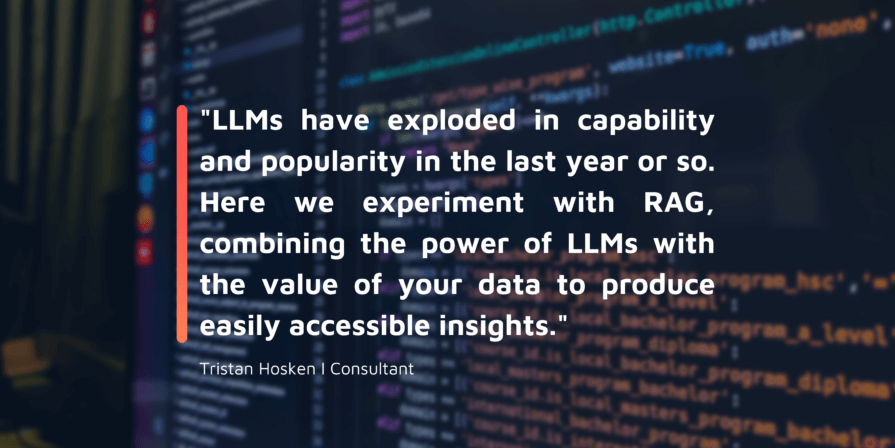
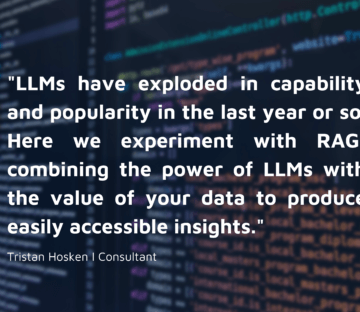
February 6, 2024 | AWS, Blog, OPA
Check out the latest blog by our Consultant, Tristan Hosken, as he explores Retrieval Augmented Generation (RAG). Tristan provides insights into advantages and disadvantages of RAG through hands-on experiments with AWS’s Bedrock and Azure’s OpenAI service.
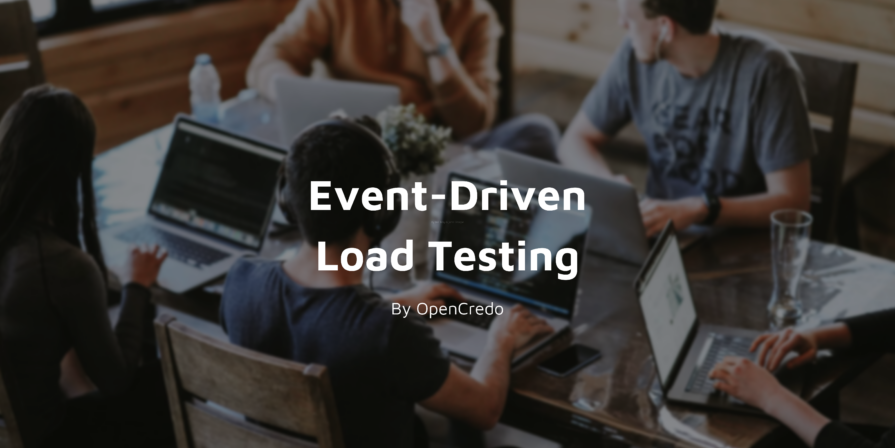
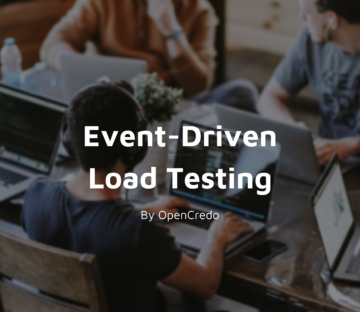
October 12, 2023 | Blog, Platform Engineering
Check out our latest blog “Event Driven Load Testing” which explores how, through some smart automation techniques, testing strategies can be adapted to support scale-up organisations where there are potentially many disparate teams needing to work together.
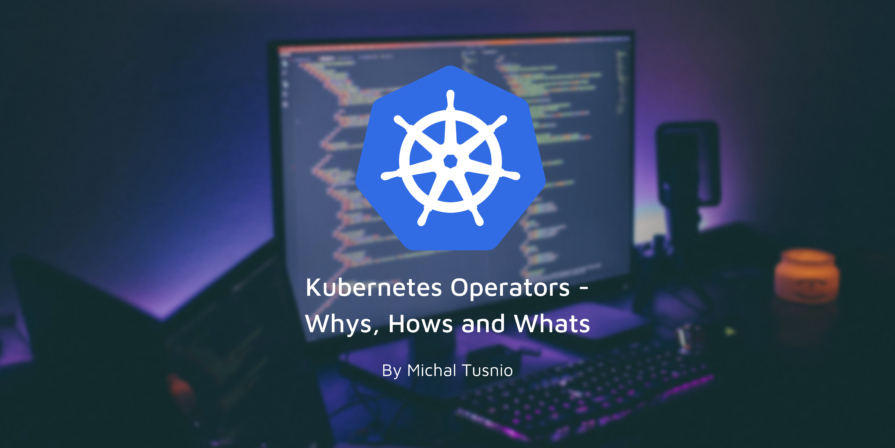
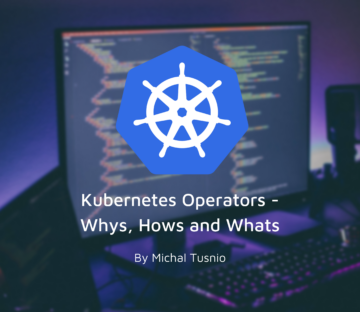
September 27, 2023 | Blog, Kubernetes
Learn to create your first Kubernetes operator by checking out our Senior Consultant Michal Tusnio’s latest blog, “Kubernetes Operators – Whys, Hows and Whats” where he takes you on a journey from zero to operator.
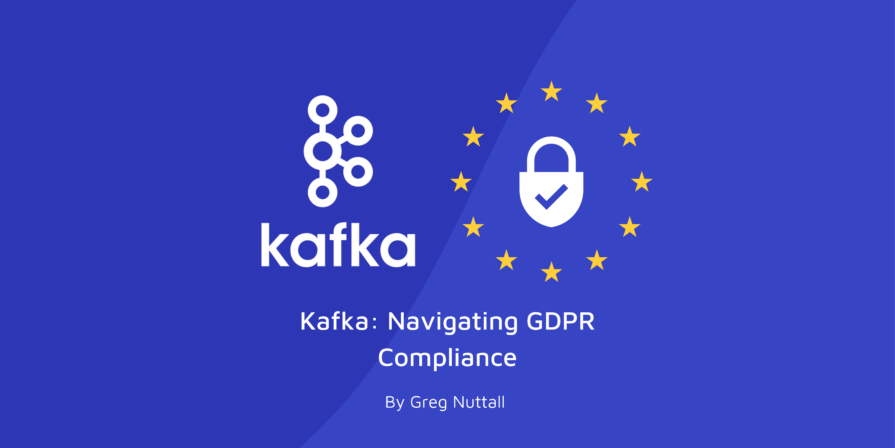
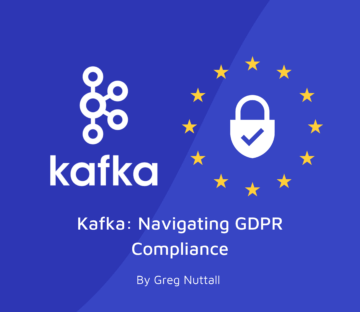
Check out Greg Nuttall’s latest blog where he looks at the challenges posed by GDPR’s “Right to be Forgotten” in the context of Apache Kafka, and delves deeper into three strategies for overcoming them.
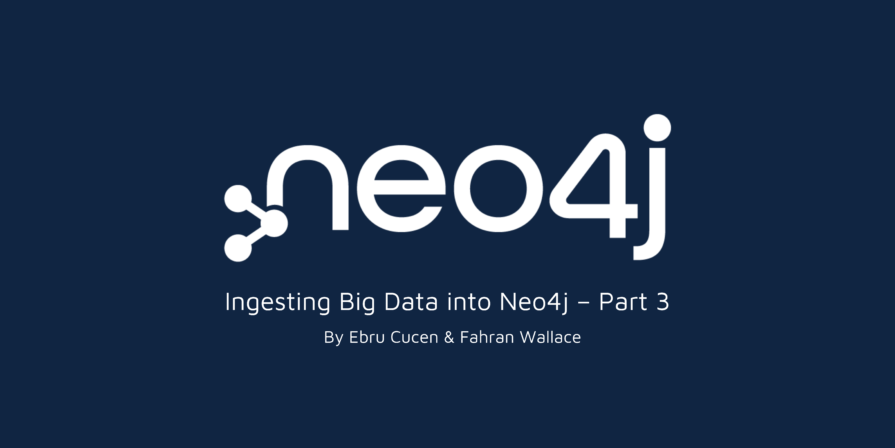
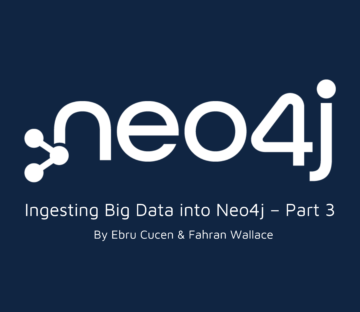
March 9, 2023 | Blog, Data Analysis, Neo4j
Check out the last part of Ebru Cucen and Fahran Wallace’s blog series, in which they discuss their experience ingesting 400 million nodes and a billion relationships into Neo4j and what they discovered along the way.
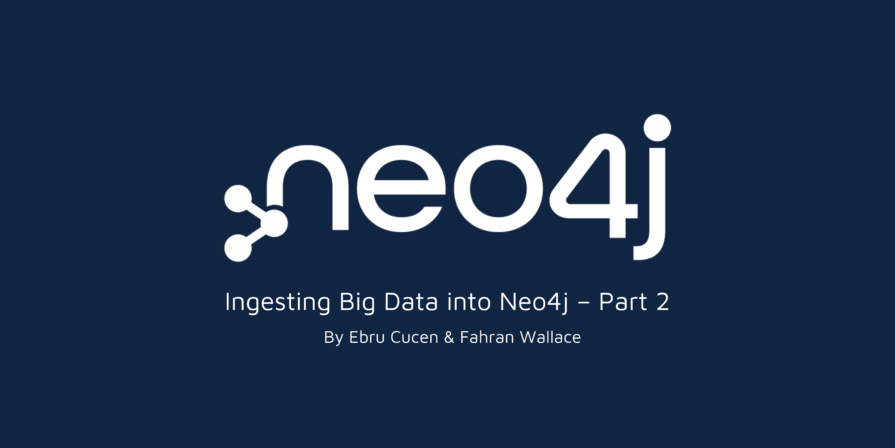
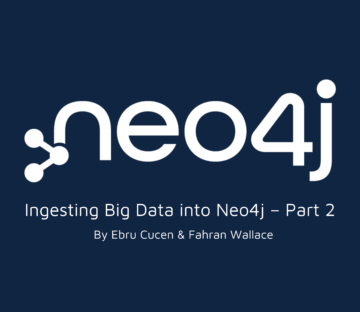
February 16, 2023 | Blog, Data Analysis, Neo4j
Check out Part 2 of Ebru Cucen and Fahran Wallace’s blog series, in which they discuss their experience ingesting 400 million nodes and a billion relationships into Neo4j and what they discovered along the way.

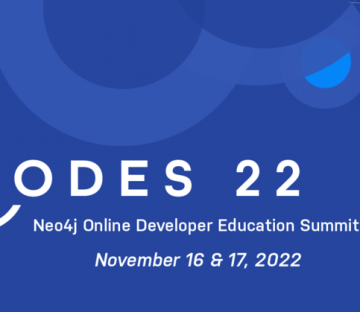
February 1, 2023 | Blog, Data Analysis, Neo4j
As data becomes ubiquitous and deeply interconnected, tracing where who or which system that data comes from – its lineage – will create bigger problems and opportunities for us on the horizon. Watch the recording of James Bowkett talk from NODES 2022 – Neo4j Online Developer Education Summit 202 on ‘Tracing Your Data’s DNA.’
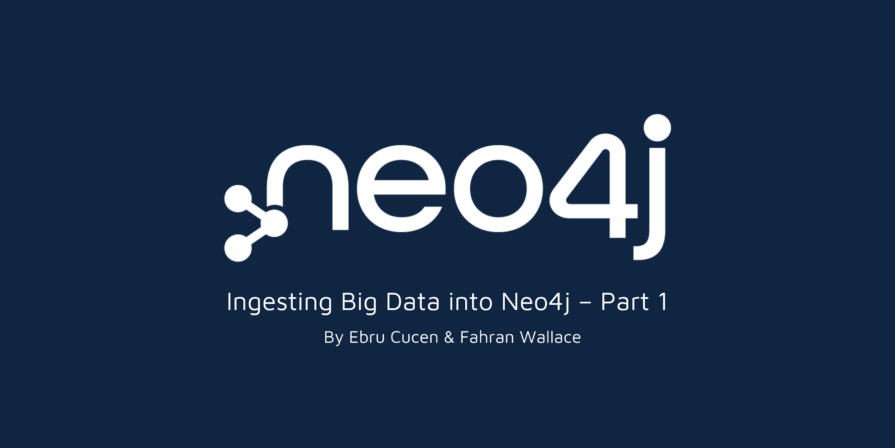
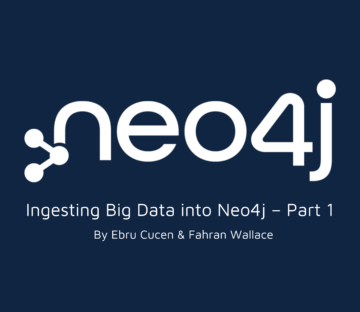
January 26, 2023 | Blog, Data Analysis, Neo4j
Fahran Wallace and Ebru Cucen’s most recent blog post is part 1 of a three-part series. They investigate how OpenCredo ingested 400 million nodes with a billion relationships into Neo4j.

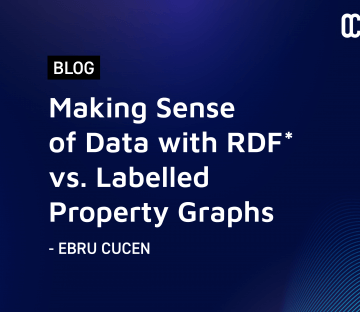
January 31, 2022 | Blog, Data Engineering
There are two camps of Graph database, one side is RDF, where they are strict with their format, and somewhat limited for their extensibility. The other side is LPG, where they can define labels to the relationships. With its recent extension, RDF now allows users to add properties, thus becoming RDF*. In this blog, Ebru explores the structural and performance differences between LPG and RDF*.

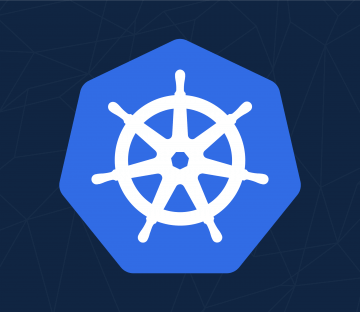
December 5, 2021 | Cloud, Kubernetes
Kubernetes’ second release in 2021, version 1.22, has been out for a little while now and with 1.23 on its way, we thought we’d take a look back. Kubernetes 1.22 was a highly comprehensive release with 53 enhancements in all three graduation levels: 13 features have graduated to stable, 24 enhancements reached beta status, and 16 new features have been accepted into the alpha stage.
The latest version has some noteworthy security features such as running Kubelet without root access, pod security policies, and seccomp. There are also a couple of deprecated and removed APIs. In this blog, we’ll discuss the significant changes in v1.22, as well as how to handle the removed APIs.


September 2, 2021 | Blog, Cloud, Kubernetes
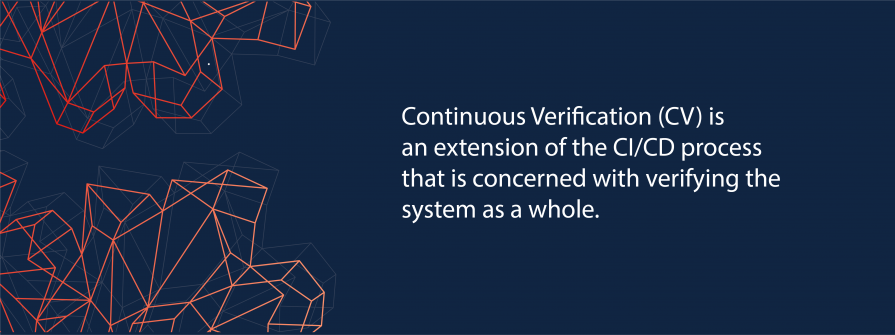
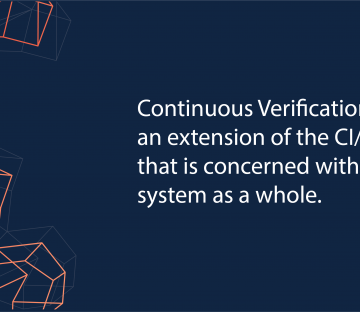
October 15, 2020
Continuous Verification is a term that is starting to pop up from time-to-time… but what does it mean? Well… according to Nora Jones and Casey Rosenthal, authors of O’Reilly’s Chaos Engineering books,
“Continuous verification (CV) is a discipline of proactive experimentation, implemented as tooling that verifies system behaviors. This stands in contrast to prior common practices in software quality assurance, which favor reactive testing, implemented as methodologies that validate known properties of software. This isn’t to say that prior common practices are invalid or should be deprecated. Alerting, testing, code reviews, monitoring, SRE practices, and the like—these are all great practices and should be encouraged”
Over the course of this post, we will unpack this statement: to understand what is behind it and what it might mean for your development process.
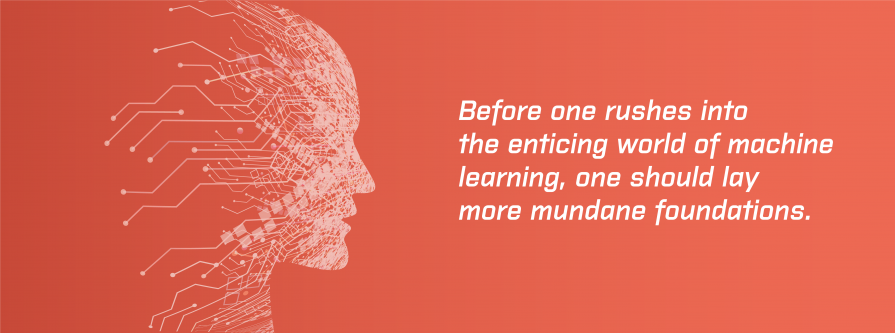

April 2, 2020 | Machine Learning
Recent years have seen many companies consolidate all their data into a data lake/warehouse of some sort. Once it’s all consolidated, what next?
Many companies consolidate data with a field of dreams mindset – “build it and they will come”, however a comprehensive data strategy is needed if the ultimate goals of an organisation are to be realised: monetisation through Machine Learning and AI is an oft-cited goal. Unfortunately, before one rushes into the enticing world of machine learning, one should lay more mundane foundations. Indeed, in data science, estimates vary between 50% to 80% of the time taken is devoted to so-called data-wrangling. Further, Google estimates ML projects produce 5% ML code and 95% “glue code”. If this is the reality we face, what foundations are required before one can dive headlong into ML?


Writing your own Kafka source connectors with Kafka Connect. In this blog, Rufus takes you on a code walk, through the Gold Verified Venafi Connector while pointing out the common pitfalls


May 31, 2018 | DevOps
As traditional operations has embraced the concept of code, it has benefited from ideas already prevalent in developer circles such as version control. Version control brings the benefit that not only can you see what the infrastructure was, but you can also get reviews of changes by your peers before the change is made live; known to most developers as Pull Request (PR) reviews.




April 18, 2018 | Microservices
Quite a few of the anti-patterns we observe today on microservices projects are strongly related to how people approach the problem. Given their nature, these anti-patterns tend to be deeply ingrained and self-sustaining. Addressing them starts with increased awareness and by changing ways of approaching the problem, rather than by the introduction of yet another technical tool or framework.


February 6, 2018 | Cloud
Among the many announcements made at Re:Invent 2017 was the release of AWS Privatelink for Customer and Partner services. We believe that the opportunity signalled by this modest announcement may have an impact far broader than first impressions suggest.


January 23, 2018 | Data Engineering, DevOps
Machine Learning is a hot topic these days, as can be seen from search trends. It was the success of Deepmind and AlphaGo in 2016 that really brought machine learning to the attention of the wider community and the world at large.


October 24, 2017 | Data Engineering
Cockroach Labs, the creators of CockroachDB are coming to London for the first time since their 1.0 GA Release in May 2017. They will be taking time to talk about “The Hows & Whys of a Distributed SQL Database” at the Applied Data Engineering meetup, hosted and run by us here at OpenCredo.
We have been interested in CockroachDB for a while now, including publishing our initial impressions of the release on our blog. We thought this would be the perfect time to do a bit of a Q&A before the event! I posed Raphael Poss, a core Software Engineer at Cockroach Labs a few questions.


August 8, 2017 | Cassandra
Recently, the sad news has emerged that Basho, which developed the Riak distributed database, has gone into receivership. This would appear to present a problem for those who have adopted the commercial version of the Riak database (Riak KV) supported by Basho.
This blog is written exclusively by the OpenCredo team. We do not accept external contributions.


June 15, 2017 | Data Engineering
CockroachDB is a distributed SQL (“NewSQL”) database developed by Cockroach Labs and has recently reached a major milestone: the first production-ready, 1.0 release. We at OpenCredo have been following the progress of CockroachDB for a while, and we think it’s a technology of great potential to become the go-to solution for a having a general-purpose database in the cloud.


May 22, 2017 | Data Analysis
As a final piece of our recent blog series about Apache Spark on 16 May we have presented details of a use-case about using Spark Structured Streaming to generate real-time alerts of suspicious activity in an AWS-based infrastructure.
This blog is written exclusively by the OpenCredo team. We do not accept external contributions.


May 9, 2017 | Cassandra
Data analytics isn’t a field commonly associated with testing, but there’s no reason we can’t treat it like any other application. Data analytics services are often deployed in production, and production services should be properly tested. This post covers some basic approaches for the testing of Cassandra/Spark code. There will be some code examples, but the focus is on how to structure your code to ensure it is testable!
This blog is written exclusively by the OpenCredo team. We do not accept external contributions.


April 25, 2017 | Cassandra, Data Analysis, Data Engineering
Apache Spark is a powerful open source processing engine which is fast becoming our technology of choice for data analytic projects here at OpenCredo. For many years now we have been helping our clients to practically implement and take advantage of various big data technologies including the like of Apache Cassandra amongst others.


March 23, 2017 | Cassandra, Data Analysis, Data Engineering
In recent years, Cassandra has become one of the most widely used NoSQL databases: many of our clients use Cassandra for a variety of different purposes. This is no accident as it is a great datastore with nice scalability and performance characteristics.
However, adopting Cassandra as a single, one size fits all database has several downsides. The partitioned/distributed data storage model makes it difficult (and often very inefficient) to do certain types of queries or data analytics that are much more straightforward in a relational database.


March 7, 2017 | Data Analysis, GCP
Google has recently made its internal Spanner database available to the wider public, as a hosted solution on Google Cloud. This is a distributed relational/transactional database used inside for various Google projects (including F1, the advertising backend), promising high throughput, low latency and 99.999% availability. As such it is an interesting alternative to many open source or other hosted solutions. This whitepaper gives a good theoretical introduction into Spanner.


February 16, 2017 | Cassandra
One of the default Cassandra strategies to deal with more sophisticated queries is to create CQL tables that contain the data in a structure that matches the query itself (denormalization). Cassandra 3.0 introduces a new CQL feature, Materialized Views which captures this concept as a first-class construct.


January 25, 2017 | Cassandra
One of the simplest and best-understood models of computation is the Finite State Machine (FSM). An FSM has fixed range of states it can be in, and is always in one of these states. When an input arrives, this triggers a transition in the FSM from its current state to the next state. There may be several possible transitions to several different states, and which transition is chosen depends on the input.


October 13, 2016 | Data Analysis
In Lisp, you don’t just write your program down toward the language, you also build the language up toward your program. As you’re writing a program you may think “I wish Lisp had such-and-such an operator.” So you go and write it. Afterward you realize that using the new operator would simplify the design of another part of the program, and so on. Language and program evolve together…In the end your program will look as if the language had been designed for it. And when language and program fit one another well, you end up with code which is clear, small, and efficient – Paul Graham, Programming Bottom-Up


October 10, 2016 | Cassandra
In the culmination of our blog series on the topic, on October 6th 2016 OpenCredo Consultants Dominic Fox, Alla Babkina and Guy Richardson, and hosted by Marco Cullen, presented the common design and implementation issues that they have come across in real-world Apache Cassandra deployments.


October 4, 2016 | Software Consultancy
As many of you know, OpenCredo are part of the global Trifork family, and as such have access to the combined knowledge and experience of many technology and business leaders throughout the group. Getting public access to all of this expertise and technical leadership can be tricky – until now. GOTO Accelerate is a one-day business focused conference that has emerged from the very successful GOTO technology events.


September 15, 2016 | Cassandra
Cassandra isn’t a relational database management system, but it has some features that make it look a bit like one. Chief among these is CQL, a query language with an SQL-like syntax. CQL isn’t a bad thing in itself – in fact it’s very convenient – but it can be misleading since it gives developers the illusion that they are working with a familiar data model, when things are really very different under the hood.


September 6, 2016 | Cassandra
A growing number of clients are asking OpenCredo for help with using Apache Cassandra and solving specific problems they encounter. Clients have different use cases, requirements, implementation and teams but experience similar issues. We have noticed that Cassandra data modelling problems are the most consistent cause of Cassandra failing to meet their expectations. Data modelling is one of the most complex areas of using Cassandra and has many considerations.


August 26, 2016 | Cassandra
At OpenCredo we have been working with Cassandra since 2012 and we are big fans of both open source Apache Cassandra and the capabilities of DataStax Enterprise. Over the years we have collected a great deal of experience throughout the company on how to deliver the benefits of Cassandra in real world projects and have also seen some common pitfalls that businesses have fallen into.


June 15, 2016 | Software Consultancy
It’s as simple as that – and as a consultant, it’s a problem I see all the time. Testing is always focused on functional testing. Non-functional testing, by comparison, is treated like a second class citizen. This means that functional requirements get refined, and non-functional requirements are ignored until the very end.


April 5, 2016 | Software Consultancy
This post is part of a series which introduce key concepts in successful test automation. Each post contains sample code using the test-automation-quickstart project, a sample Java test automation framework available from Github.


April 2, 2016 | Terraform Provider
When it comes to automating the creation of infrastructure in cloud providers, Terraform (version at time of writing 0.6.14) has become one of my core go to tools in this space. It provides a fantastic declarative approach to describing the resources you want, and then takes care of making it so for you, keeping track of the state in either a local file or a remote store of some sort. Various bits of sensitive data is often provided as input to terraform.


March 17, 2016 | Software Consultancy
In order to be able to regularly release an application, your automated tests must be set up to give you fast and reliable feedback loop. If bugs are only found during a long and expensive multi-service or end-to-end test run, it can be a hinderance to fast delivery. Unfortunately I have often seen this problem in development environments: a huge suite of clunky, flaky and slow end-to-end tests which test the full functionality of the application as opposed to being more lightweight and reflecting basic user journeys. This produces the “ice cream cone” anti-pattern of test coverage, where unit tests aren’t providing the kind of coverage and feedback they need to.


January 8, 2016 | Microservices
Many of our clients are in the process of investigating or implementing ‘microservices’, and a popular question we often get asked is “what’s the most common mistake you see when moving towards a microservice architecture?”. We’ve seen plenty of good things with this architectural pattern, but we have also seen a few recurring issues and anti-patterns, which I’m keen to share here.




November 23, 2015 | Software Consultancy
Over a year ago, my colleague Tristan posted on the OpenCredo blog about a test automation quick start framework. It’s a prepackaged framework you can clone and get going with testing instantly, rather than wasting your time rebuilding your framework every single project. We have used this framework successfully used on many of our internal projects, and it relies upon a Java, Cucumber-JVM and Selenium stack.


November 1, 2015 | Microservices
To use or not to use hypermedia (HATEOAS) in a REST API, to attain the Level 3 of the famous Richardson Maturity Model. This is one of the most discussed subjects about API design.
The many objections make sense (“Why I hate HATEOAS“, “More objections to HATEOAS“…). The goal of having fully dynamic, auto-discovering clients is still unrealistic (…waiting for AI client libraries).
However, there are good examples of successful HATEOAS API. Among them, PayPal.


October 7, 2015 | Software Consultancy
It’s well known that predicting how long a project/task will take in IT is hard. In this post I’ll address one aspect of this (correlation) and ask what insights a data science perspective can give us about how correlations can make prediction difficult. I’ll explain the problems that correlation poses, give some practical advice for teams & project managers and investigate possible innovations to tooling that might improve matters.


October 1, 2015 | Data Engineering
Akka Streams, the new experimental module under Akka project has been finally released in July after some months of development and several milestone and RC versions. In this series I hope to gently introduce concepts from the library and demonstrate how it can be used to address real-life stream processing challenges.
Akka Streams is an implementation of the Reactive Streams specification on top of Akka toolkit that uses actor based concurrency model. Reactive Streams specification has been created by the number of companies interested in asynchronous, non-blocking, event based data processing that can span across system boundaries and technology stacks.
![Microservice Platforms: Some Assembly [Still] Required. Part Two](https://opencredo.com/wp-content/uploads/2018/10/banner-services-895x196.jpg)
![Microservice Platforms: Some Assembly [Still] Required. Part Two](https://opencredo.com/wp-content/uploads/2018/10/banner-services-360x312.jpg)
September 20, 2015 | Microservices
Over the past five years I have worked within several projects that used a ‘microservice’-based architecture, and one constant issue I have encountered is the absence of standardised patterns for local development and ‘off the shelf’ development tooling that support this. When working with monoliths we have become quite adept at streamlining the development, build, test and deploy cycles. Development tooling to help with these processes is also readily available (and often integrated with our IDEs). For example, many platforms provide ‘hot reloading’ for viewing the effects of code changes in near-real time, automated execution of tests, regular local feedback from continuous integration servers, and tooling to enable the creation of a local environment that mimics the production stack.


September 14, 2015 | Cloud, DevOps
If you are operating in the programmable infrastructure space, you will hopefully have come across Terraform, a tool from HashiCorp which is primarily used to manage infrastructure resources such as virtual machines, DNS names and firewall settings across a number of public and private providers (AWS, GCP, Azure, …).




January 30, 2015 | Software Consultancy
When I first started programming in Scala a few years ago, Traits was the language feature I was most excited about. Indeed, Traits give you the ability to compose and share behaviour in a clean and reusable way. In Java, we tend deal with the same concerns by grouping crosscutting behaviour in abstract base classes that are subsequently extended every time we need to access shared behaviour in part or in total.


December 21, 2014 | Publications
Neo4j in Action is a comprehensive guide to designing, implementing, and querying graph data using Neo4j. Using hands-on examples, you’ll learn to model graph domains naturally with Neo4j graph structures. The book explores the full power of native Java APIs for graph data manipulation and querying.
November 19, 2014 | Microservices
Undeniably, there is a growing interest in microservices as we see more organisations, big and small, evaluating and implementing this emerging approach. Despite its apparent novelty, most concepts and principles underpinning microservices are not exactly new – they are simply proven and commonsense software development practices that now need to be applied holistically and at a wider scale, rather than at the scale of a single program or machine. These principles include separation of concerns, loose coupling, scalability and fault-tolerance.
October 23, 2014 | Cassandra
Spring Data Cassandra (SDC) is a community project under the Spring Data (SD) umbrella that provides convenient and familiar APIs to work with Apache Cassandra.


January 6, 2014 | Cassandra
The team over at Cucumber Pro recently posted a sneak peek on their blog, demonstrating some key features of their offering.
As more of a technical user of Cucumber, there isn’t much that’s new or ground-breaking for me – almost every feature is already available through your preferred IDE combined with a few plugins.


December 2, 2013 | Cassandra
Perhaps the most important of Cassandra’s selling points is its completely distributed architecture and its ability to easily extend the cluster with virtually any number of nodes. Implementing a classical RDBMS-style transaction consisting of “put locks on the database, modify the data, then commit the transaction”-style operations are simply not feasible in such an architecture (i.e. that doesn’t scale well).


November 14, 2013 | Cassandra
Cassandra 2.0 was released in early September this year and came with some interesting new features, including “lightweight transactions” and triggers.
Despite the rising interest in the various non-relational databases in recent years, there are still numerous use-cases for which a relational database system is a better choice. The latest major release of Cassandra (version 2.0) provides some interesting features that aim to close this gap, and offers its fast and distributed storage engine enhanced with new options that will make users’ lives easier.






August 2, 2013 | Software Consultancy
Configuration management was born in the pre-cloud era. Remember the days when acquiring a super powerful multi core server felt like winning the jackpot? Infrastructure was a slightly different place back then. Yet for all the recent developments in DevOps, its legacy is still with us.


February 25, 2013 | Neo4j
As part of our work, we often help our customers choose the right datastore for a project. There are usually a number of considerations involved in that process, such as performance, scalability, the expected size of the data set, and the suitability of the data model to the problem at hand.
This blog post is about my experience with graph database technologies, specifically Neo4j. I would like to share some thoughts on when Neo4j is a good fit but also what challenges Neo4j faces now and in the near future.


February 19, 2013 | Software Consultancy
This blog post continues on from Part 1 which discussed types of tests and how to create robust tests. Part 2 will examine techniques to help whip a test suite in to shape and resolve common issues that slow everything down. The approaches in this post will focus on spring based applications, but the concepts can be applied to other frameworks too.




January 10, 2013 | DevOps
Recently I have started looking into SaltStack as a solution that does both config management and orchestration. It is a relatively new project started in 2011, but it has a growing fanbase among Sys Admins and DevOps Engineers. In this blog post I will look into Salt as a promising alternative, and comparing it to Puppet as a way of exploring its basic set of features.


December 18, 2012 | Software Consultancy
The first thing most people think of when they start a project with the good intentions of test driven development is: write a test first. That’s great, and something I would fully encourage. However, diving in to writing tests without forethought, especially on large projects with a lot of developers can lead to new problems that TDD is not going to solve. With some upfront thinking (but not big upfront design!) a large team can avoid problems later down the line by considering some important and desirable traits of a large and rapidly changing test suite.




February 15, 2012 | Cloud
As part of a recent project, I have been working on a number of Scala/Lift applications that we are hosting on a private Cloud Foundry instance.
In this blog post I would like to talk about some practical aspects of developing and deploying Lift applications to Cloud Foundry.
Out of the box, Cloud Foundry is able to run simple Lift applications smoothly. Things however become more interesting if your application needs to talk to one of the available services on Cloud Foundry, such as a relational or a NoSql store.


February 13, 2012 | Software Consultancy
Recently we were approached by a client to do some performance testing of the web application they had written. The budget allowed two days for this task. Ok. No problem. Yes, we can. Naturally I had one or another question though…


February 8, 2012 | Data Analysis, Data Engineering
Most of the important players in this space are large IT corporations like Oracle and IBM with their commercial (read expensive) offerings.
While most of CEP products offer some great features, it’s license model and close code policy doesn’t allow developers to play with them on pet projects, which would drive adoption and usage of CEP in every day programming.


February 3, 2012 | Software Consultancy


November 4, 2011 | Neo4j
In the previous post we compared the performance of fetching relationships from densely populated nodes using Neo4j native store and using lucene index.
We’ve seen that we can fetch the small subset of relationships from a super-node (containing ~1M relationships in total) directly from the Lucene index, the performance of the first run (cold-caches) is better then using the Neo store directly. The subsequent runs with caches warmed up show comparable performance, slightly in favor of direct Neo store fetching, sue to low level cache optimizations.




June 3, 2011 | Neo4j
Neo4J is one of the first graph databases to appear on the global market. Being open source, in addition to its power and simplicity in supporting graph data model it represents good choice for production-ready graph database.
However, there has been one area I have struggled to get good-enough performance from Neo4j recently – super nodes.
